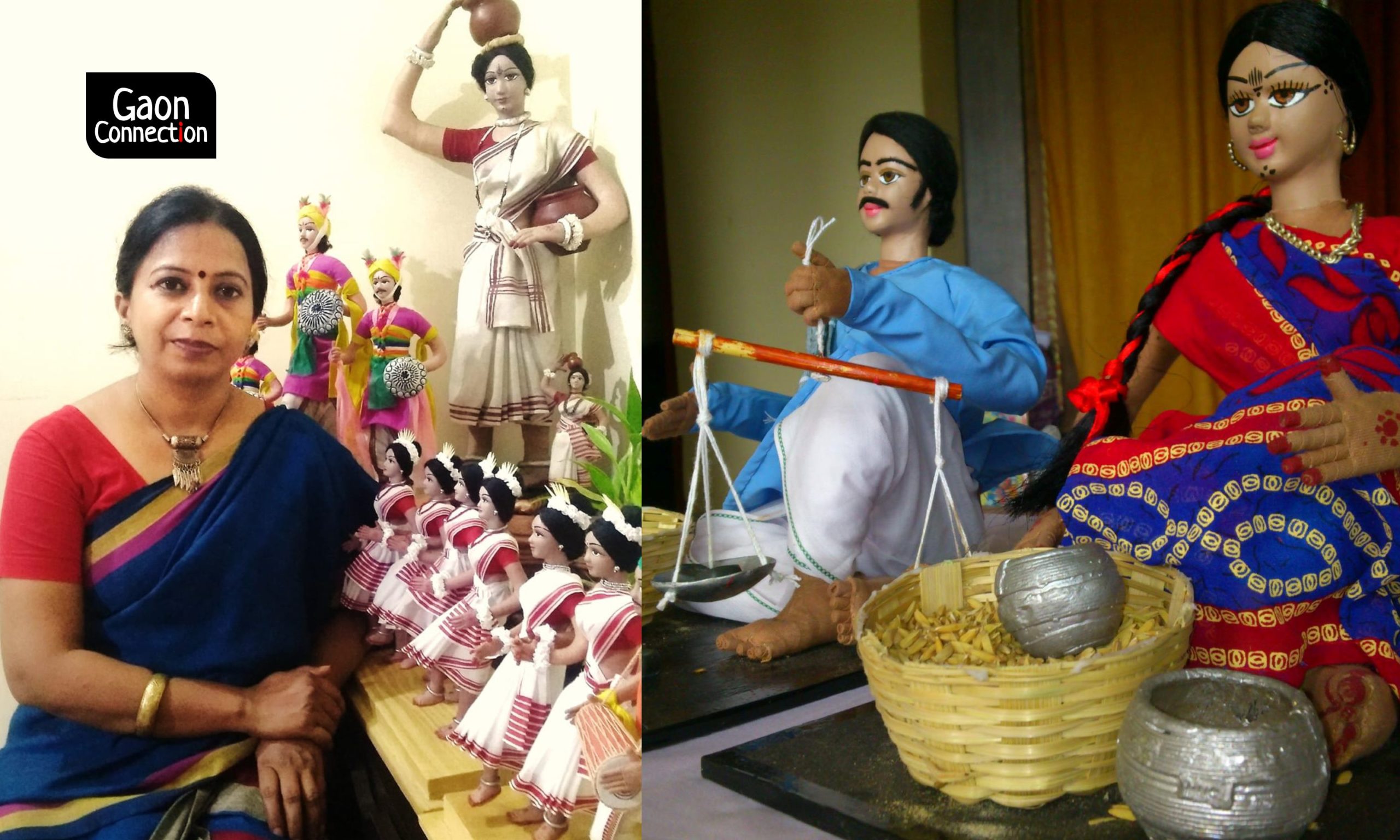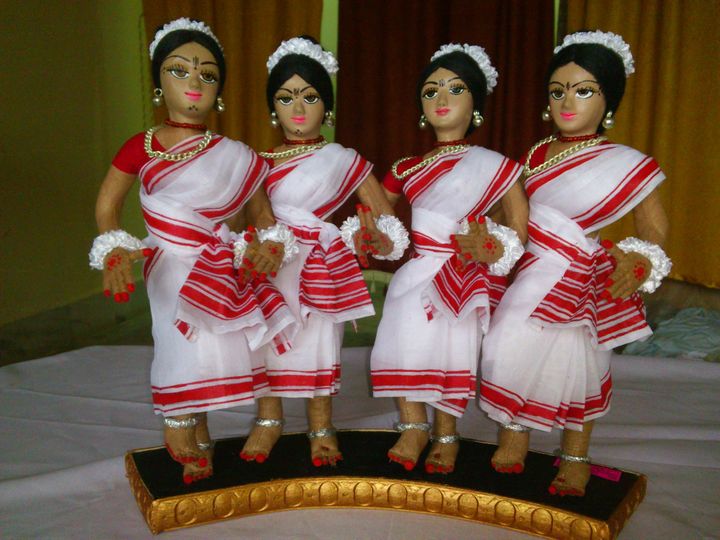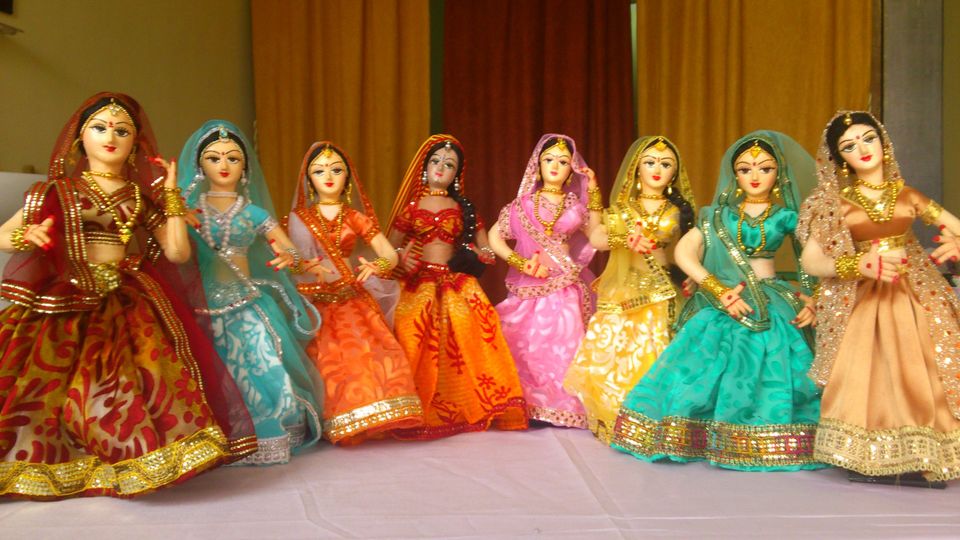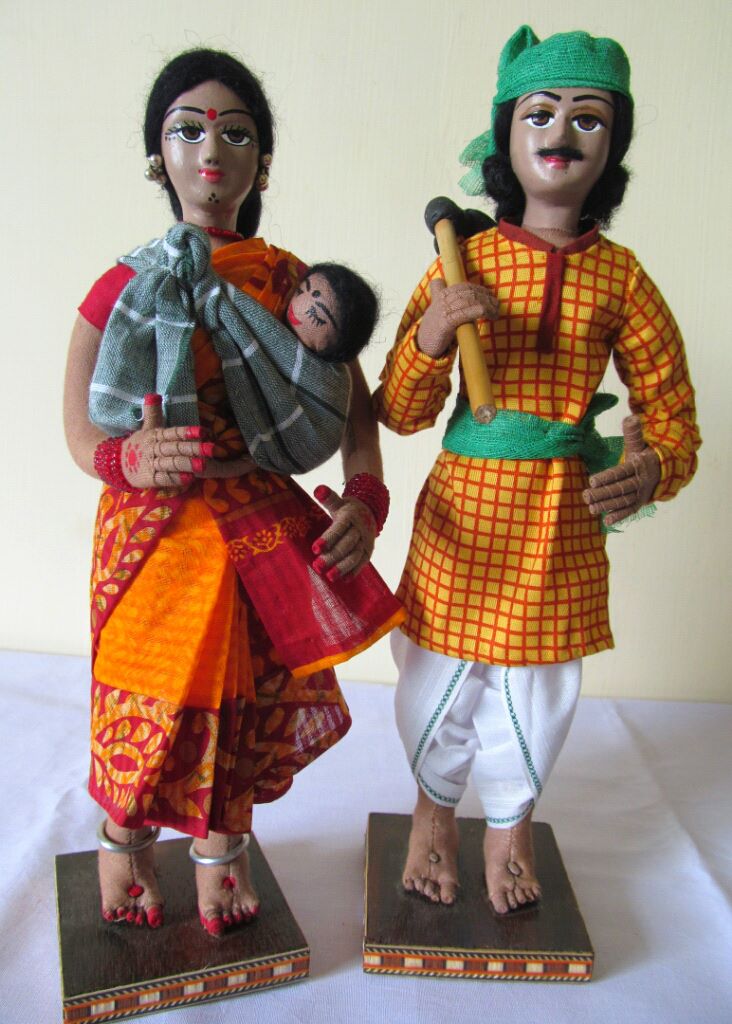Doll story: Ranchi resident Shobha Kumari creates indigenous dolls steeped in Jharkhand’s culture and helps tribal women earn a living
Following Prime Minister Narendra Modi’s Vocal For Local initiative, Kumari of Srijan Handicrafts has so far trained more than a thousand women to make dolls of clay and sawdust. Ten of them have gone on to set up their own enterprises and earn up to Rs 25,000 a month. She also employs about 35 women who make up to Rs 12,000 a month.


A tribal woman carrying a baby on her back and balancing a bundle of firewood on her head. A woman busy winnowing harvested paddy. A farmer weighing goods with his scales. A woman wearing a Jharkhandi hasuli (choker) and anklets, with gajra in hair. You’d see all these sights in Jharkhand. Under the aegis of Srijan Handicrafts, Shobha Kumari, 49, deftly captures countless such vignettes in dolls made of clay and sawdust. Over the past twenty five years, she has trained more than a thousand women, many of whom have gone on to earn their livelihood.
Kumari has been fond of making dolls since she was 13, and never imagined it would turn into her profession. It helped that there is a huge demand for eco-friendly dolls. And, what her dolls do is entertain as well as offer a peep into the culture of the state they originate from. “I never dreamt people would like my dolls so much,” Kumari, who has studied till Class 12, told Gaon Connection over the phone from New Alkapuri in Ranchi, the state capital.

Kumari’s dolls have a market outside of the state and the country too. “In fact, ten women who I trained in doll making have set up their own units and earn up to twenty five thousand rupees a month. We also employ about thirty five women who earn up to twelve thousand rupees as monthly salary,” Kumari said.
A lot of care goes into decorating the dolls with matching, familiar accessories. And, despite the relative popularity of these dolls, Kumari rues that the lack of a good marketing platform hits indigenous dollmakers hard. There’s also the issue of cost — while the input cost is low, each of these dolls takes 20 to 25 hours to make, and that adds to the final price. The dolls vary in price between Rs 500 and Rs 15,000, depending on the intricacy involved.

“Every woman has some talent, it just needs to be nurtured and given direction,” said Kumari. “We can train a newcomer to earn upto ten thousand rupees a month. I charge only those who can pay, those from underprivileged backgrounds get free training,” she told Gaon Connection.
Towards the end of last year, prime minister Narendra Modi mentioned in his Mann Ki Baat programme as to why we should cherish, preserve and nurture ‘Vocal for Local’. Kumari’s Jharkhand dolls are a good example of this spirit.
The issue of visibility was also solved to an extent when member of Parliament from Ranchi Sanjay Seth visited her workspace in August last year. “I’ve been making dolls for many years, but people knew about us only after the MP’s visit. We now have enough orders to last us five-six months.”

The subjects of the dolls wear garments or carry accessories that are steeped in local culture — a traditional red-bordered sari, an earthenware pitcher, the traditional green-yellow-pink combination in garments, the dhoti, kurta and gamcha, and sword and shield. Kumari’s team makes a range of crafts, including hand-crafted bags, hand-painted pots, stone flowers and wooden sculptures.
Sushila Devi, 45, has been working with Kumari for the past eight years, “I earn between ten and twelve thousand rupees a month. Besides dolls, we also make pickles, papad and badi [a delicacy made of ural dal] here. What I like most here is that we are trained based on what we are capable of and based on market demand,” she told Gaon Connection.

One thing that used to bother most of these women is that their children were losing touch with education due to the closure of schools following the COVID-19 pandemic. “Now, our educated colleagues are offering them free tuition,” Devi said.
And so, this has turned into an initiative that benefits all — it keeps alive culture, generates livelihoods and ensures children are not deprived of education.

